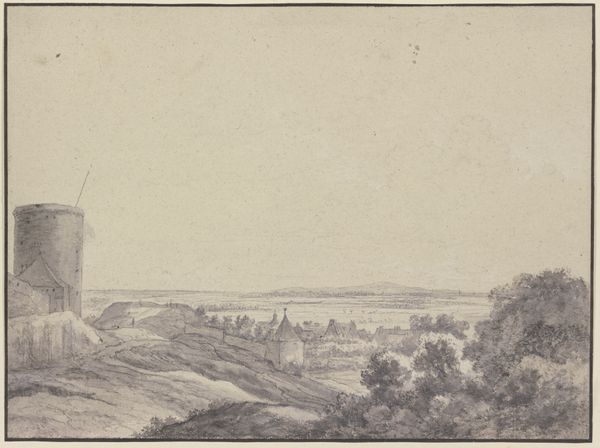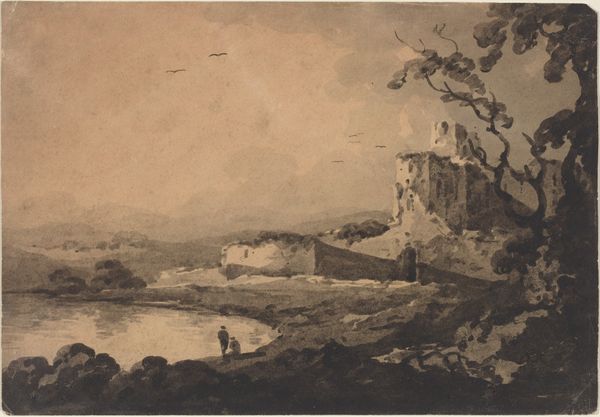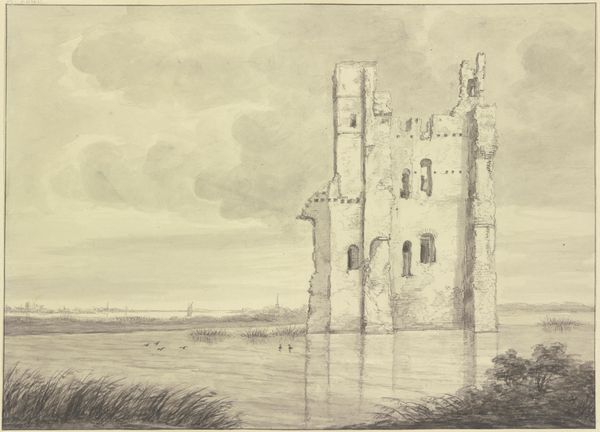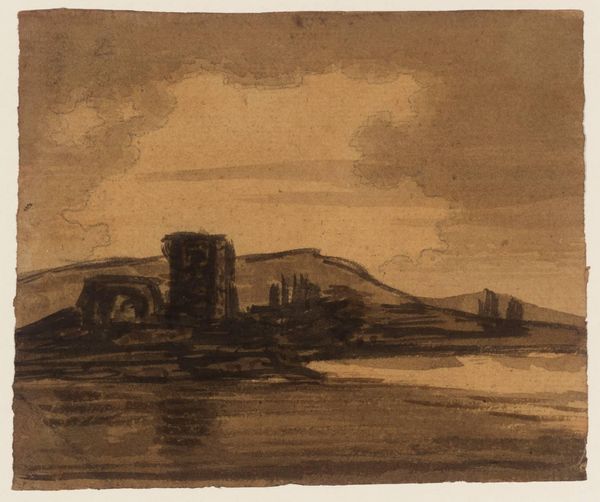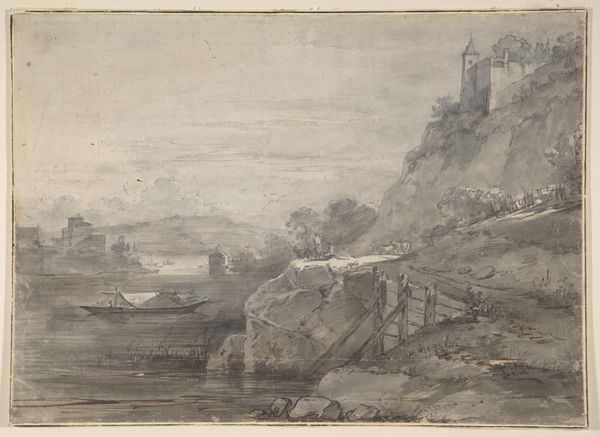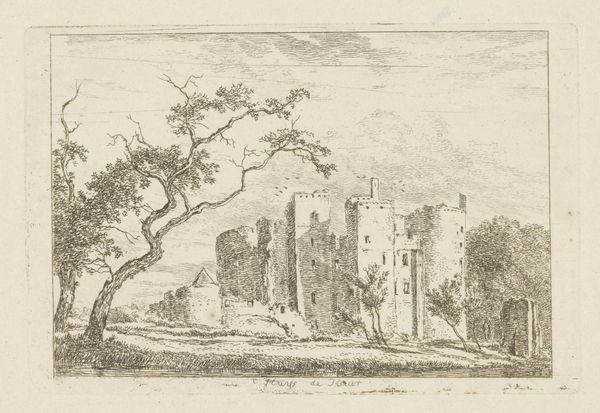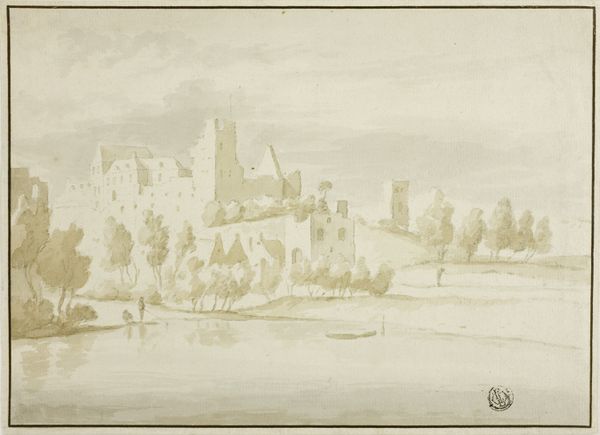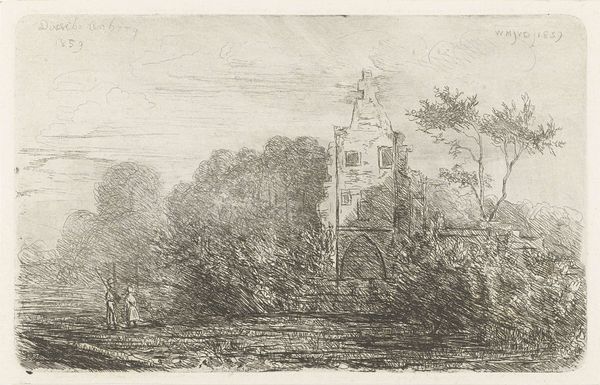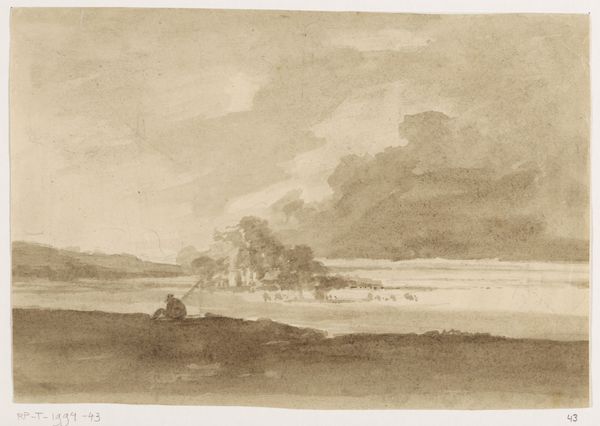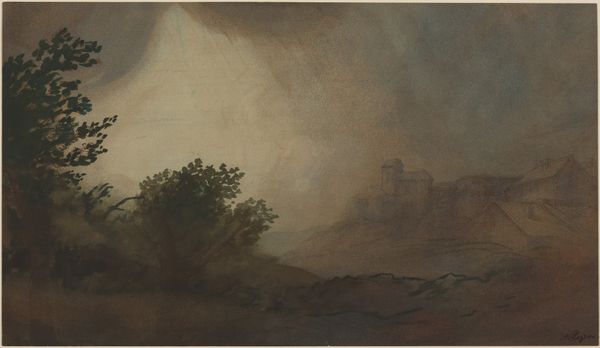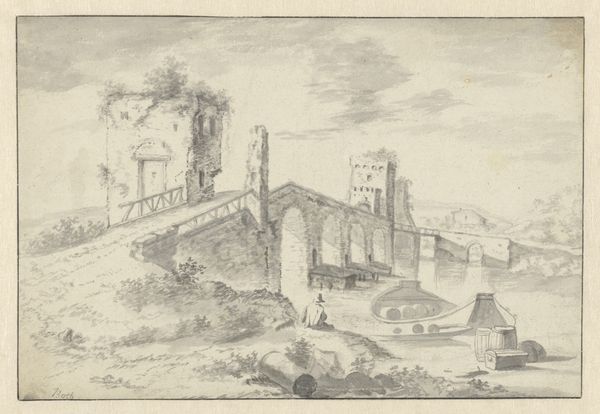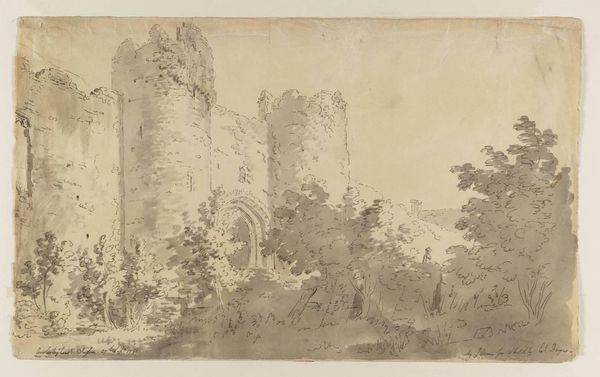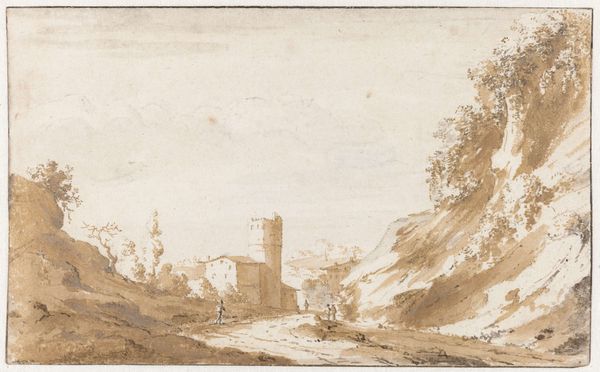
Dimensions: height 151 mm, width 205 mm
Copyright: Rijks Museum: Open Domain
Editor: So, this is Johannes Tavenraat's "Landschap met vervallen toren," a landscape in watercolor and drawing from somewhere between 1840 and 1880. The crumbling tower and muted colors give it a melancholic feel. What do you make of the ruins in the landscape? Curator: The ruin speaks volumes. A crumbling tower often carries heavy symbolism – loss, the passage of time, perhaps the vanity of human ambition. It serves as a memento mori, doesn't it? Think of other Romantic landscapes – how often does a ruin stand at the center, dwarfing human presence? Editor: I see that. The insignificance of people compared to, like, history. It does feel very Romantic. What about the flock of birds – do they factor into the symbolism? Curator: Absolutely. Birds, depending on their type and context, signify freedom, the soul, a connection between heaven and earth. But a flock could also represent fragility or transience. Their flight emphasizes movement against the stillness of the ruin, wouldn't you agree? They are almost escaping a bygone era. Editor: That's a really interesting point. It makes the tower seem even more stuck in time. Curator: Consider also the lack of vibrant color. The washed-out tones contribute to the overall feeling of decay and reflection. The Romantic era was captivated by ruins. Ask yourself: why? Editor: Maybe a way to think about your place in the world? A constant reminder of change? Curator: Precisely. It's not just about picturesque scenery; it’s about engaging with cultural memory, contemplating our own fleeting existence within the grand scheme of history. I find myself drawn into quiet contemplation. And you? Editor: I see it now! Looking at the landscape as a moment for self reflection through its ruins is what makes Romanticism so lasting.
Comments
No comments
Be the first to comment and join the conversation on the ultimate creative platform.
